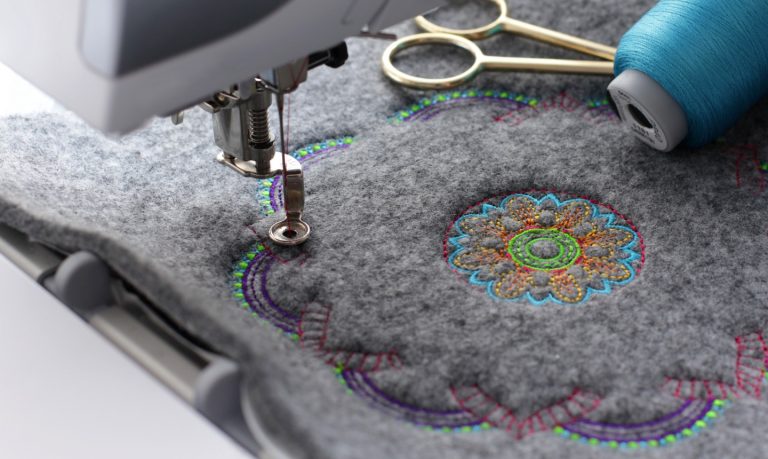Top-Rated Digitizing for Embroidery: Perfect Stitch Each Time
Top-Rated Digitizing for Embroidery: Perfect Stitch Each Time
Blog Article
Mastering the Embroidery Digitizing Refine: Your Ultimate Overview
Embroidery digitizing is a careful craft that requires precision and competence to convert detailed styles right into electronic formats for maker needlework. As artisans begin on this trip to understand the needlework digitizing process, a detailed understanding of the essentials establishes the foundation for excellence. Nevertheless, past the rudimentary understanding lies a world of innovative software, specialized tools, and nuanced methods waiting to be checked out. By delving into the nuances of digitizing, one can unlock a world of creative possibilities and raise their needlework jobs to brand-new heights.

Recognizing Needlework Digitizing Essentials
Embroidery digitizing fundamentals develop the structure upon which complex styles are equated right into machine-readable styles for accurate stitching. This initial action in the embroidery digitizing process is essential for guaranteeing that the final embroidered item is a loyal depiction of the initial layout. Recognizing needlework digitizing essentials includes realizing essential principles such as stitch kinds, sew instructions, thickness, rug, and pull compensation.
Sew types play an important role in determining the visual and textural result of the embroidered layout. By picking the proper stitch type, whether it be satin, fill, or running stitch, digitizers can achieve the wanted impact and enhance the total high quality of the embroidery. In addition, sew direction influences the circulation and dimension of the design, while thickness figures out the spacing and protection of the stitches.
Furthermore, padding stitching gives security to the design by safeguarding the material and preventing distortion throughout the needlework process. Draw payment is another crucial consideration to counteract the all-natural tendency of textile to contract when sewn. Grasping these needlework digitizing fundamentals is essential for creating professional-quality embroidered products.
Picking the Right Digitizing Software
Choosing the ideal digitizing software is an important choice that considerably affects the efficiency and quality of the needlework digitizing procedure. Digitizing for Embroidery. When picking the right digitizing software application, it is vital to consider elements such as the complexity of styles you prepare to develop, the user-friendliness of the software program, the degree of consumer assistance offered, and the compatibility with your embroidery device
There are different digitizing software application choices offered in the marketplace, varying from standard programs for newbies to innovative software program for specialist digitizers. Some preferred selections consist of Wilcom EmbroideryStudio, Hatch Needlework Software Program, and PulseID. These software supply a vast array of devices and attributes to assist you produce detailed layouts easily.
Prior to choosing, it is recommended to discover the various software program alternatives via cost-free tests or trials to figure out which one finest fits your needs. In addition, reviewing evaluations and seeking recommendations from seasoned digitizers can supply important insights into the staminas and weak points of each software (Digitizing for Embroidery). By carefully evaluating your demands and comparing the features of various digitizing software program, you can make an informed selection that improves look at this website your needlework digitizing process
Digitizing Tools and Strategies

Optimizing Style Setup for Needlework
Mastering the intricacies of design settings is fundamental in accomplishing ideal cause the needlework digitizing procedure, structure upon the foundation laid by comprehending digitizing devices and techniques. When enhancing style settings for embroidery, it is necessary to think about elements such as stitch type, thickness, padding, pull compensation, and registration. Sew kind choice affects the general feel and look of the layout, with choices like satin, fill, and running stitches using different textures and results. Thickness refers to the spacing and thickness of stitches, influencing the style's protection and sturdiness. Proper underlay sewing supplies stability and prevents textile distortion, particularly for complex layouts or on elastic materials. Pull settlement changes for fabric stretch throughout sewing, guaranteeing accurate layout replication. Enrollment settings straighten various elements of the layout precisely, keeping general design honesty. By our website fine-tuning these design setups, embroiderers can enhance the top quality and precision of their stitched creations.

Troubleshooting Common Digitizing Issues
When coming across usual digitizing problems throughout the embroidery process, it is necessary to comprehend the origin and carry out reliable services without delay. One common trouble is stitch thickness problems, where stitches might be also dense, creating the fabric to pucker, or as well thin, resulting in spaces in the layout. Adjusting the stitch density setups in the digitizing software program can help solve this issue.
One more constant challenge is thread breaks during the embroidery procedure. This can take place as a result of various reasons such as inaccurate tension setups, plain needles, or making use of low-grade thread. Guaranteeing appropriate upkeep of the needlework machine, including regular needle changes and tension modifications, can reduce the incident of string breaks.
Additionally, layout enrollment mistakes can cause misaligned components within the needlework layout. Examining the layout placement in the digitizing software program and making needed modifications before stitching can aid in preventing this concern. By resolving these usual digitizing concerns without delay and properly, you can make certain a smoother needlework procedure and high-grade ended up items.
Final Thought
In final thought, mastering the embroidery digitizing procedure calls for a strong understanding of the fundamentals, the best choice of software, and knowledge of devices and strategies. Maximizing style settings and troubleshooting common digitizing concerns are critical action in making certain high-quality needlework outcomes. By following these actions vigilantly, one can attain accuracy and effectiveness in the digitizing process.
Report this page